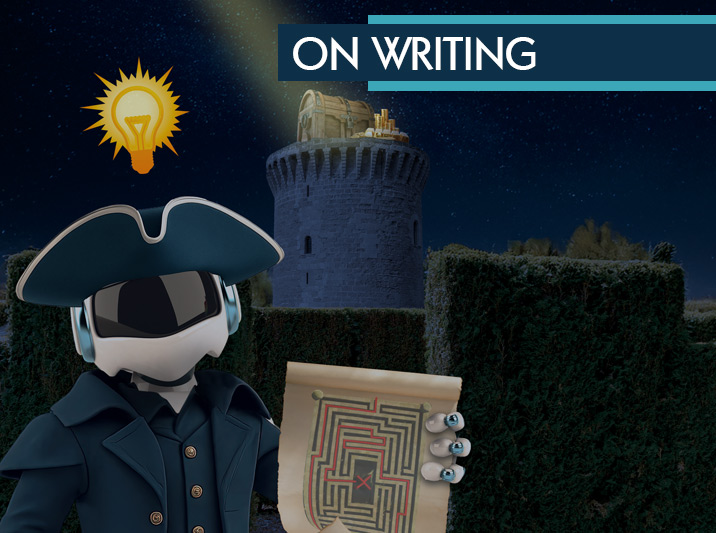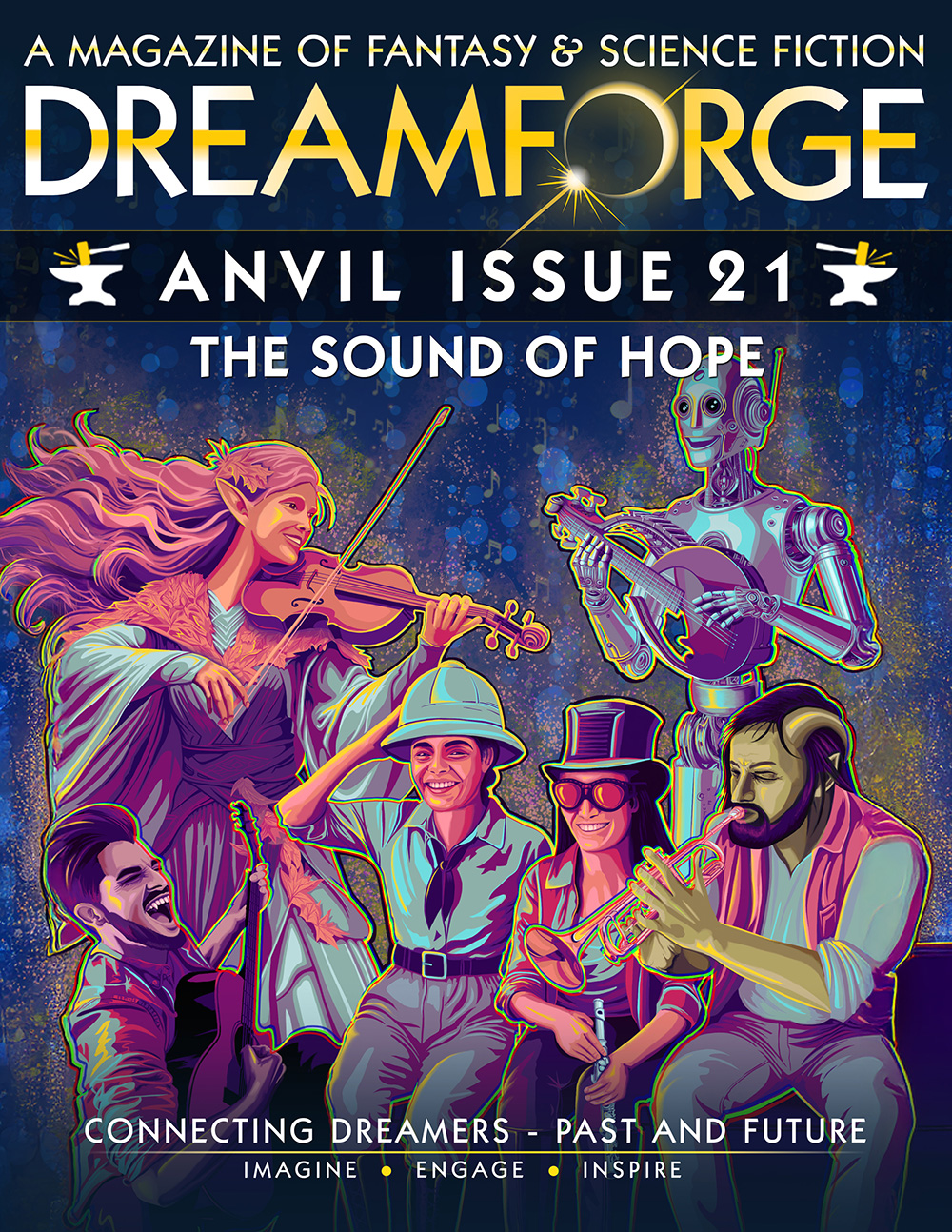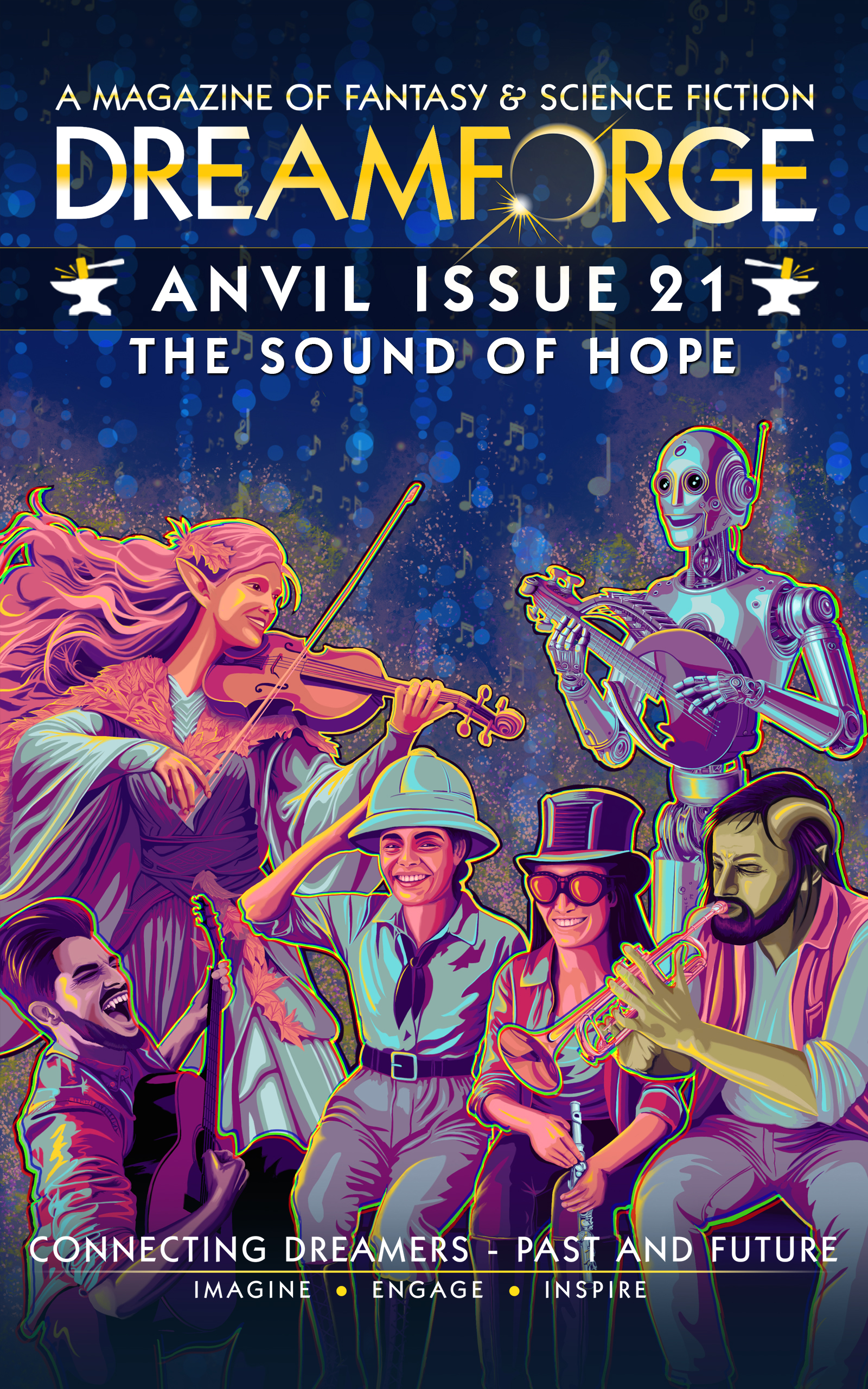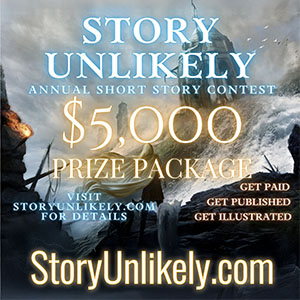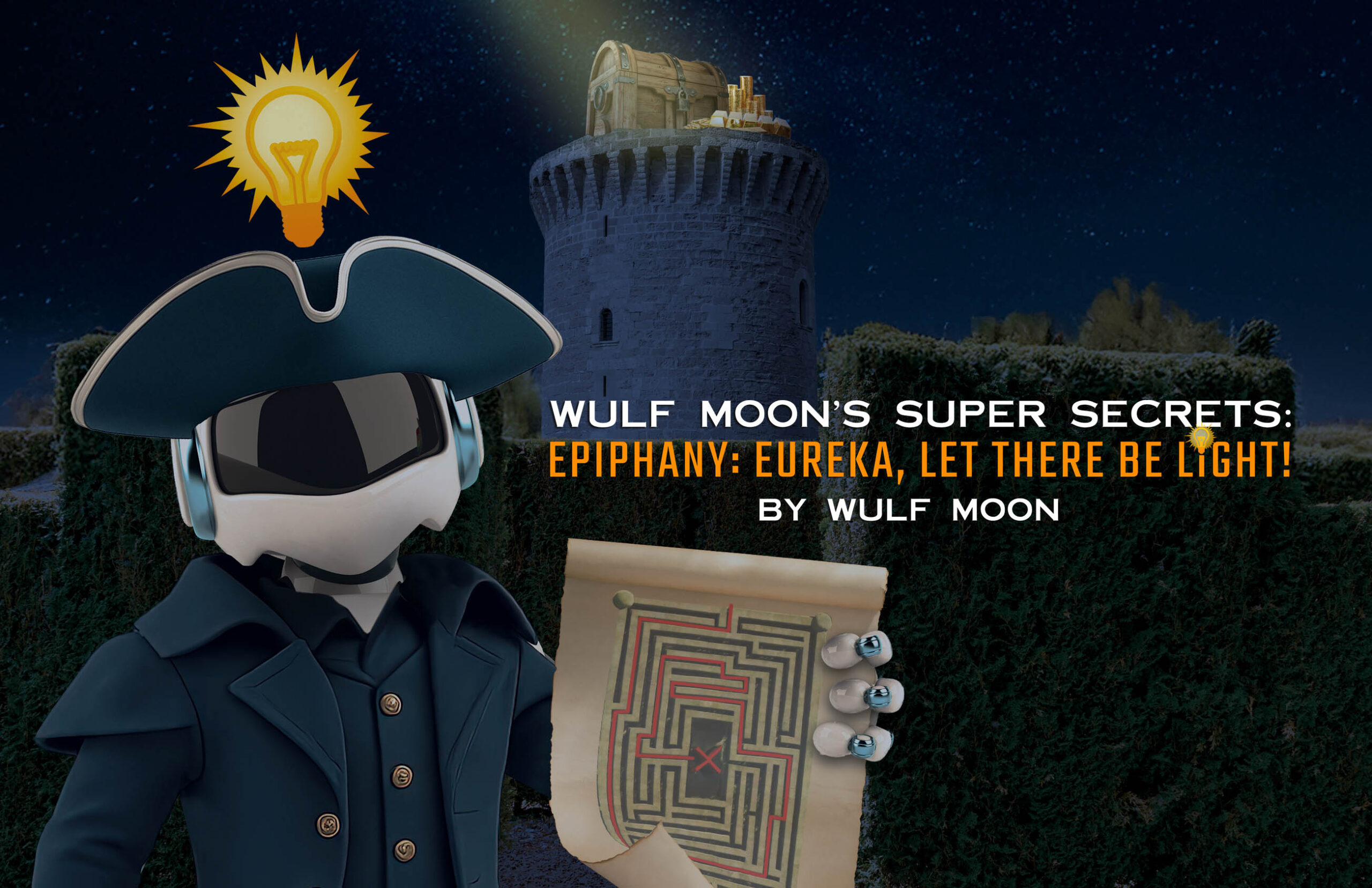
“However vast the darkness, we must supply our own light.”
—Stanley Kubrick
History is rich with stories. Some of them true. Some of them embellished. Some complete fabrications. One historical account that likely had frills added is about Archimedes, a Greek mathematician who lived during the 3rd century BCE. You’ve heard of pi? Not the berry-filled pastry, but the equation for figuring out a circle’s circumference? Yeah, that guy.
As the tale goes, King Herio II of Syracuse commissioned a crown from a goldsmith, provided the gold, and when the crown was delivered, he suspected the goldsmith had alloyed it with silver to keep some gold for himself. Cheater, cheater, pumpkin eater!
The king asked Archimedes if there was a method to determine if the crown was pure gold without damaging it. Archimedes puzzled over the conundrum but could find no answer to the king’s request… until he took a break from his calculations to enjoy a warm bath. As he lowered himself into the tub, water flowed over the edge and insight dawned: he could calculate the crown’s volume by submersing it in water and measuring the amount of water displaced. He reportedly became so excited by his epiphany, he leaped from the bath and ran through the streets of Syracuse naked, shouting, “Eureka! Eureka!”
Thus, through his principle of buoyancy and his public streaking, Archimedes proved to be a man of ideas far ahead of his time.
What is an epiphany, and how does it relate to story and our prior discussion on The Dark Night of the Soul? I’m glad you asked, because it’s a deeper story principle that mirrors monumental, transformative, even transcendent events in human nature. After all, our story characters are reflections of the human experience, and the more realistic their problem solving is, the more real your character becomes to the reader.
There’s also an added bonus. After sinking your beloved hero into the pit of despair, the reader will be flushed with dopamine thrills as they rush with your protagonist up from the tortured depths of the soul into the light of illumination and the hope of salvation.
You did promise your readers an exciting journey, right? A rollercoaster thrill ride? At least some light at the end of the maze after luring your character down one dead end after another? That hero they’ve grown to love is about to throw in the towel and surrender! They’ll be lost forever in that tangled labyrinth, and I hear there’s a manticore in there! How can you save them while providing the ultimate contrast from darkness to light?
By giving your hero their own Eureka! moment in the pit of despair. By giving them an epiphany.
How can we effectively wield this mighty Sword of Light in our stories, giving our readers the adrenaline rush they crave? By understanding the makeup of epiphanies and why people often experience this state of awareness at their darkest moment.
Let There Be Light: The Intellectual Epiphany
Epiphanies are often described as moments of sudden insight, intuitive understanding, even startling revelations. Some refer to these insights as “coming out of the blue” or being hit with “a sudden stroke of brilliance.” The aha moment of an epiphany can be so illuminating, it can seem as if a gift has been handed to the recipient from a divine source. In fact, the Merriam Webster dictionary states one definition of epiphany is “an appearance or manifestation especially of a divine being.”
If your protagonist is doing religious soul-searching, it’s quite possible they could be guided out of their labyrinthian darkness by the divine, especially if they’ve been desperately calling out to their god. Ancient Greeks believed epiphanies were divine inspirations gifted to them by one of Nine Muses, goddesses that presided over the arts and sciences. As Homer proclaimed in the opening lines of The Odyssey: “Sing to me, O Muse…”
Other definitions of epiphanies reveal a secular or temporal nature. These are defined as:
(1) a usually sudden manifestation or perception of the essential nature or meaning of something
(2) an intuitive grasp of reality through something (such as an event) usually simple and striking
(3) an illuminating discovery, realization, or disclosure
These intuitive or intellectual insights involve problem solving, usually big problems that may appear impossible to resolve. When faced with such conundrums, the mind may refuse to accept defeat, drawing on collective experience combined with new theories and trials to discover solutions that previously did not exist. Sometimes the epiphany is the result of intense focus on a problem; at other times it can be the result of a seemingly unrelated event that allows the mind to see the problem from a new perspective.
Who has not heard the story of Newton sitting in contemplation in his garden and an apple drops from a tree, thumps him on the head, and the light bulb moment occurs–the Earth has gravitational force, which must be the force holding the Moon in orbit. While his own letters reveal the apple didn’t hit him in the head, witnessing an apple fall straight to the ground did inspire his theory of universal gravitation.
There’s also the tale of Thomas Edison’s literal light bulb moment. Some stories say while studying a solar eclipse in the Wyoming Territory in 1878, Edison was moved by observing the sun’s corona to invent the incandescent light bulb. An article in Inc., July 19, 2017, stated: “The experience profoundly affected Edison in particular, says David Baron, author of the recently published American Eclipse (Liveright). Baron’s book follows Edison and others on their journeys to view the 1878 total solar eclipse. ‘If it wasn’t for the eclipse, Edison would not have made the incandescent light bulb,’ says Baron…. In September 1878, Edison announced that he had an epiphany and his incandescent bulb was weeks away.”
In reality, it took Edison another year and around 1,200 experiments before his team succeeded in finding suitable filament material before a viable incandescent light bulb was born. One may have an epiphany, but bringing that vision to fruition may not always be easy.
Which leads us to the intellectual epiphany’s relationship to a story’s plot. The protagonist enters the Dark Night of the Soul because of crushing failure to achieve their heart’s desire. The story began with an opposing force keeping them from their heart’s desire, and the protagonist went on a quest to push back against the opposing force to get what they desired. To create tension and to test the hero, the hero is going to fail a few times. They learn this task will not be easy and, in the end, they’ll seriously doubt they have the right stuff to defeat their adversary. The last fail that ushers them into their dark night is going to be like a Hulk Hogan over-the-head slam down. Your hero is going to bang against the floor, their world is going to black out, and as they sink into humiliation and despair, they’ll likely conclude there is no way they’ll ever be able to beat the Hulkster.
But as the stars flash before their eyes, one of them lights up like a comet. They remember a key move from their coach’s training. Or maybe it’s the voice of their father saying, “The bigger they are, the harder they fall.” Or maybe each time they lost to the Hulk, they noticed something that now adds up to a weakness they’re able to exploit for the win. And in the power of that epiphany, they rise back up and throw everything they’ve got against The Hulk
One…
Last…
Time.
Who truly knows what triggers our brilliant ideas when the chips are down and it appears all is lost. But something does. Under the pressure of the moment, under the fervent need, the answer often appears, usually in unusual and extraordinary ways. The trick is to make the epiphany believable, or else it’s just deus ex machina— the ancient Greek’s god from the machine save. The problem is readers know it’s not God, it’s you, the author, the god of your story, jumping in to save your cherished hero without rhyme or reason. And they won’t buy it; they’ll view it as a cheat. Cheater, cheater, pumpkin eater!
Epiphanies can strike like lightning. But before lightning strikes, you normally see the clouds coming, you smell the ozone in the air, you hear the distant rumble of thunder. You might even sense the static building or feel your hair rising (run!). In most cases, there are signs that have been building up before lightning strikes. In the same way, it’s important to build toward that epiphany from hints at the beginning of the story, from lessons gathered from the fails. That way, when your scrappy hero on the mat has that desperate idea, rises up from defeat, busts a move, and throws The Hulk to the floor, the reader will believe you provided enough evidence that this surprising move might just be possible (think crane kick in The Karate Kid).
Guess what? Do your job right and the reader will actually have their own epiphany as they think back and add up the clever signs you gave them along the way. The light bulb will go off. They will believe. And they’ll rise up with your hero in the power of their new insight and cheer.
The intellectual epiphany is extremely satisfying to readers when properly played.
The Transformational Soul Epiphany
However, in the deepest Dark Night of the Soul scenes, an epiphany is not merely about figuring out an inspired solution to a thorny problem. Remember: The Dark Night of the Soul happens internally, in the troubled depths of a character that has had their core beliefs shaken, even crushed. While the epiphany should provide an insightful idea or plan that has the potential to solve the character’s dilemma that put them in this dark state, we need to go deeper for maximum thrust. Their soul has been shattered. Belief in self and others is most likely lost.
What I call the soul epiphany is a powerful experience deep inside your protagonist that fuses those broken pieces together into a new alloy gleaming with transformative power. This is a seismic shift of belief and purpose, piercing through protective shields, casting off false belief and failure, forging new truth by burning off the slag of failures and false beliefs of the past. Reborn, repurposed, revitalized, purged, protagonists now know themselves in new light, light that transforms their understanding of who they are and what their purpose is. It is the phoenix moment, and from the ashes they rise again… and they rise forever changed.
In the preceding article, “The Dark Night of the Soul,” I discussed The Dark Night in Clint Eastwood’s famous The Man With No Name Western, A Fistful of Dollars. It’s time to discuss the Epiphany in that tale.
Gunslinger Joe finally pays for his ill-gotten success and gets beaten almost to death by his adversary, Ramón. But Joe escapes and recovers in a dark cave, perhaps a mine because there’s equipment in there. As he slowly heals and regains the use of his crushed gun hand, he practices firing into a big iron pipe or boiler. He notices something. Pulls himself up. Stumbles over. Runs his fingers over the bullet holes.
The bullets did not pierce the metal.
Joe keeps testing the metal as he heals. You see, Joe has a problem. His adversary is a crack shot with a rifle, and although Joe is fast with his .45, a pistol doesn’t have the range of a rifle. If Joe rides into town for a high-noon showdown, he’ll be shot before he gets a chance to draw his gun.
But seeing that iron stop all his bullets gives Joe an epiphany. We know this because his eyes light up as he walks over, feels the bullet indentations again, and strikes a match against what he realizes is bulletproof metal. This is light in the midst of his Dark Night. What does the lighting of the match signal to viewers?
Joe has had an epiphany.
Sure enough, in the very next scene, Joe is cutting out a chest-sized piece of metal for himself. As we see him fashion ropes to it and hide it under his poncho, we discover what he has invented to solve his dilemma— a Magic Sword in the form of a bulletproof vest! Joe now has the ability to get in range of cold-blooded Ramón with his .45, and The Man With No Name (whose name is Joe) will rise to his triumphant climax.
You’ll also see proof of his transcendence from the man he was before. Watch the movie again. Listen to Joe’s response to the innkeeper at the end about a new opportunity to play his old game. You’ll love it… and maybe even have an epiphany yourself on how to effectively work these principles into your own stories!
That’s the way to tell a potent positive arc story. There are neutral and negative arc stories as well (see the prior Super Secrets of Writing articles in DreamForge on these arcs). In these alternative plot arc stories, The Dark Night of the Soul may result in no change (think of most of the 007 Bond stories), or the hero may remain broken or even transform into something darker (think the Strange Case of Dr Jekyll and Mr. Hyde). But most readers do love their positive endings. There is great emotional expanse in stories that take a challenged character and through trials break them down to their core. When a writer is able to fuse them through the crucible of The Dark Night of the Soul and subsequent Epiphany into a new and enlightened being, their white-hot truth really shines.
These stories stand out because they don’t just make you think, they make you feel. They speak to the heart and soul of what makes people who they are and of the potential buried deep within all of us to take our broken wings and forge them anew with the power to soar, to transcend, to be reborn.
Those are the real heroes. The everyday people that are thrown down, even shattered, but in the depths of soul-crushing darkness they discover their North Star and find the power within to rise up, casting aside the shackles of false narratives and setting their course on new horizons. As Victor Hugo said: “Whatever causes night in our souls may leave stars.”*
Let there be light!


